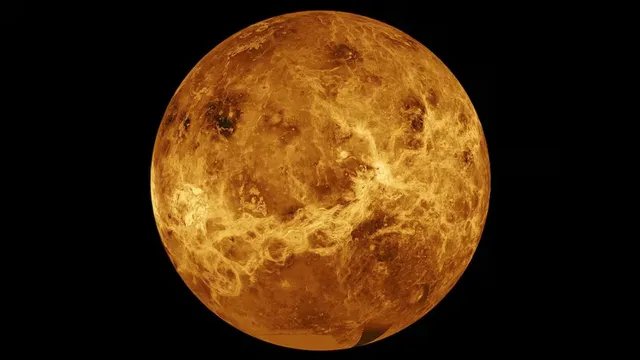- By Supratik Das
- Tue, 13 May 2025 04:33 PM (IST)
- Source:JND
Venus, long believed to be a dormant and overheated planet, may be geologically active, according to a new NASA-backed study that could reshape our understanding of rocky planets. Researchers analyzing decades-old radar data from NASA’s Magellan spacecraft found evidence suggesting Venus’s surface is moving and reshaping itself, indicating internal geological energy. This revelation suggests that Venus, often referred to as Earth’s “twin planet”, is not as inactive as previously thought. Scientists now believe that chunks of Venus’s crust are gradually shifting beneath the surface. The results came from a close reexamination of radar data gathered in the 1990s during the Magellan mission of NASA. With sophisticated computer simulations, scientists detected that some areas on the surface of Venus look as if they are split into big blocks. The blocks appear to rotate and shift, similar to ice floes floating on the water, something that is now termed 'flake tectonics'.
What Is 'Flake Tectonics'?
In contrast with Earth's locked-up tectonic plates, Venus has more modest, lesser crustal blocks. These crustal blocks ride on top of each other and move as a result of profound heat and stress from the mantle, which hints at continued geological activity below the crust of Venus. Although differing from Earth's tectonics, however, it nevertheless indicates active planet remodeling.
Earth's plate tectonics assists in maintaining global temperature and recycling material essential to supporting life. The discovery of similar activity on Venus raises key questions:
• Why did life conditions emerge on Earth but not on Venus?
• How do rocky planets mature over time?
• Might Venusian activity foreshadow what Earth itself will experience in the far future?
Understanding Venus’s geologic behavior could provide vital clues about planetary formation and help astronomers study Earth-like exoplanets in other solar systems.
Upcoming Missions
The research comes on the heels of NASA's planned return to Venus with two soon-to-launch missions:
• VERITAS (Venus Emissivity, Radio Science, InSAR, Topography, and Spectroscopy) will chart Venus's surface to examine its geologic history.
• DAVINCI (Deep Atmosphere Venus Investigation of Noble gases, Chemistry, and Imaging) will penetrate down through Venus's atmosphere to investigate its composition.
Both will launch in the early 2030s, and they provide a possibility to affirm if Venus remains geologically active. The revelation that the surface of Venus is moving opens up new avenues in planetary science. Far from a stagnant, dead world, Venus may continue to evolve, just like Earth. With future missions in the works, researchers are optimistic that Venus will at last reveal its secrets, sending us closer to understanding our planet as well as what makes rocky planets elsewhere in the universe.

